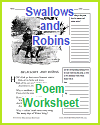Learning about the four seasons—winter, spring, summer, and fall—is a fundamental part of K-12 education because it connects science, culture, and daily life. For your young learners, studying the seasons fosters observational skills as they track weather changes, plant growth, and animal behaviors. These lessons introduce basic Earth Science concepts, such as the planet's tilt and orbit, helping students understand natural cycles. Hands-on activities—like measuring temperature, recording daylight changes, or planting seasonal gardens—make abstract ideas tangible.
Beyond science, seasons influence human activities, traditions, and agriculture. Students explore how different cultures celebrate seasonal festivals (e.g., harvests, solstices) and how food production depends on climate patterns. This knowledge builds cultural awareness and environmental stewardship. For your older students, analyzing seasonal weather data ties into climate change discussions, emphasizing the impact of human actions on ecosystems.
Seasonal changes also affect literature and art, providing rich themes for creative expression. Poems about autumn leaves, stories about winter holidays, or paintings of spring landscapes deepen students' appreciation for the arts while reinforcing literacy skills.
Ultimately, teaching the four seasons prepares your K-12 students to think critically about the natural world and their place in it. By linking science, culture, and real-world experiences, this foundational knowledge supports lifelong learning and curiosity. Our large variety of free printables and activities are designed and proven to effectively facilitate your students' learning on the four seasons.
|













